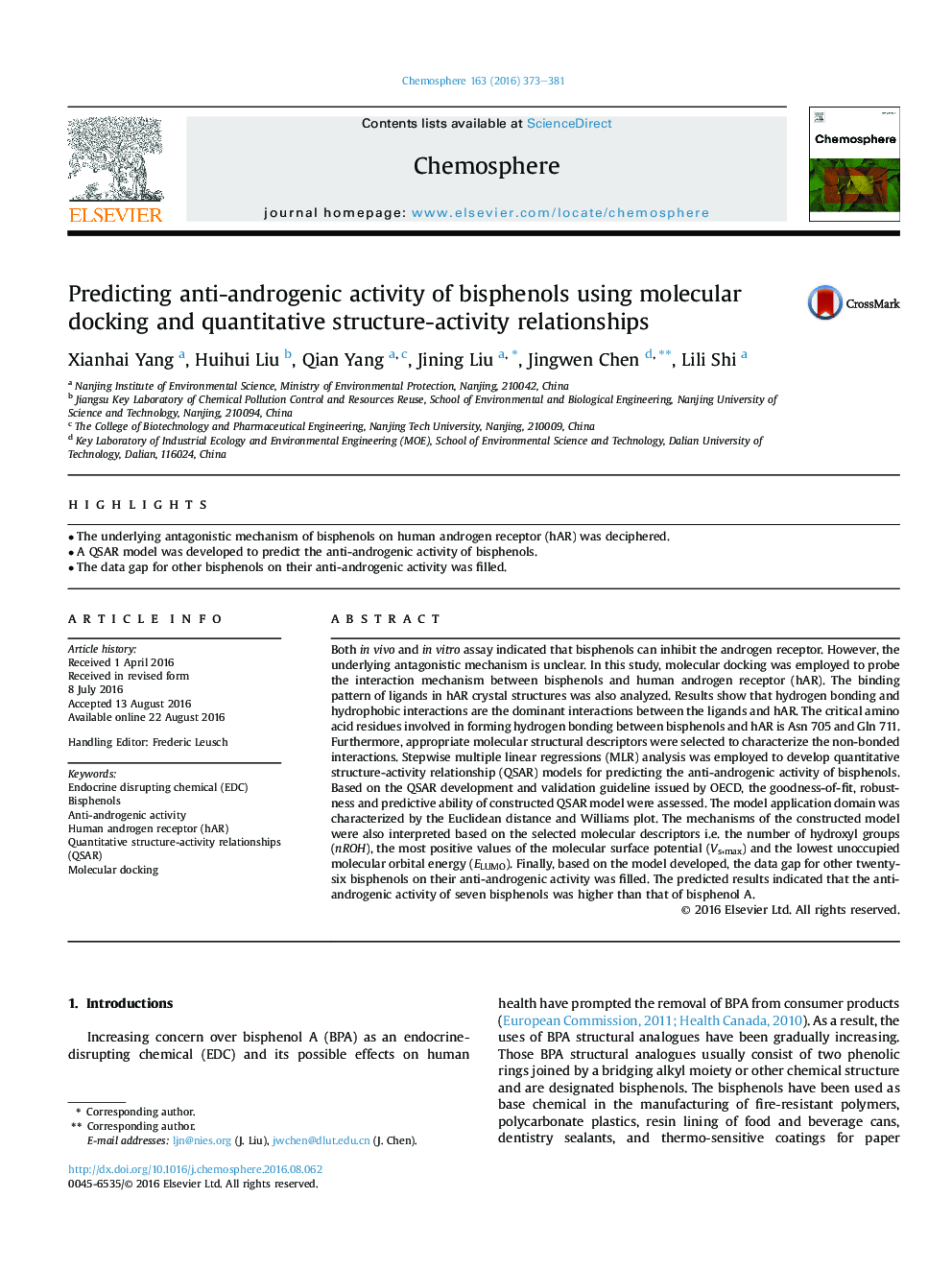| کد مقاله | کد نشریه | سال انتشار | مقاله انگلیسی | نسخه تمام متن |
|---|---|---|---|---|
| 6306296 | 1618808 | 2016 | 9 صفحه PDF | دانلود رایگان |
- The underlying antagonistic mechanism of bisphenols on human androgen receptor (hAR) was deciphered.
- A QSAR model was developed to predict the anti-androgenic activity of bisphenols.
- The data gap for other bisphenols on their anti-androgenic activity was filled.
Both in vivo and in vitro assay indicated that bisphenols can inhibit the androgen receptor. However, the underlying antagonistic mechanism is unclear. In this study, molecular docking was employed to probe the interaction mechanism between bisphenols and human androgen receptor (hAR). The binding pattern of ligands in hAR crystal structures was also analyzed. Results show that hydrogen bonding and hydrophobic interactions are the dominant interactions between the ligands and hAR. The critical amino acid residues involved in forming hydrogen bonding between bisphenols and hAR is Asn 705 and Gln 711. Furthermore, appropriate molecular structural descriptors were selected to characterize the non-bonded interactions. Stepwise multiple linear regressions (MLR) analysis was employed to develop quantitative structure-activity relationship (QSAR) models for predicting the anti-androgenic activity of bisphenols. Based on the QSAR development and validation guideline issued by OECD, the goodness-of-fit, robustness and predictive ability of constructed QSAR model were assessed. The model application domain was characterized by the Euclidean distance and Williams plot. The mechanisms of the constructed model were also interpreted based on the selected molecular descriptors i.e. the number of hydroxyl groups (nROH), the most positive values of the molecular surface potential (Vs,max) and the lowest unoccupied molecular orbital energy (ELUMO). Finally, based on the model developed, the data gap for other twenty-six bisphenols on their anti-androgenic activity was filled. The predicted results indicated that the anti-androgenic activity of seven bisphenols was higher than that of bisphenol A.
Journal: Chemosphere - Volume 163, November 2016, Pages 373-381
